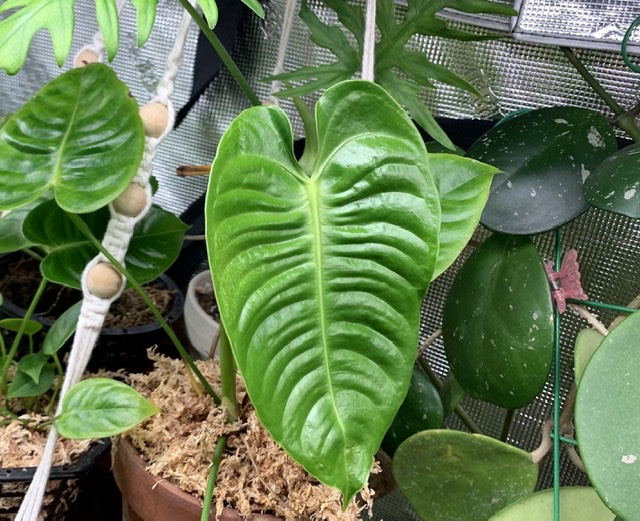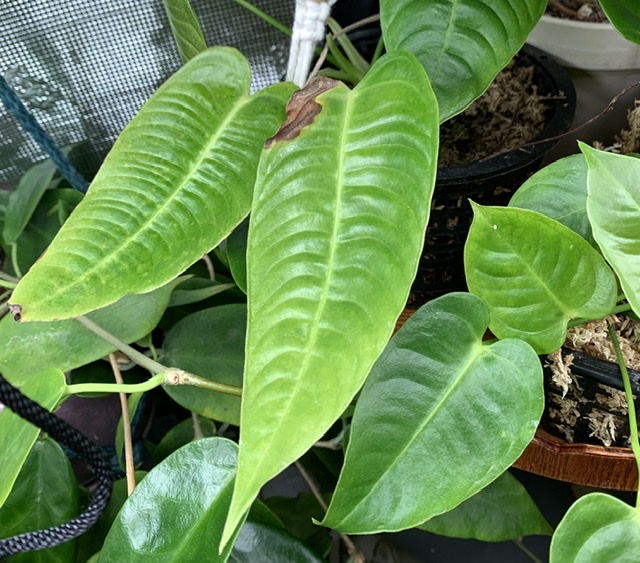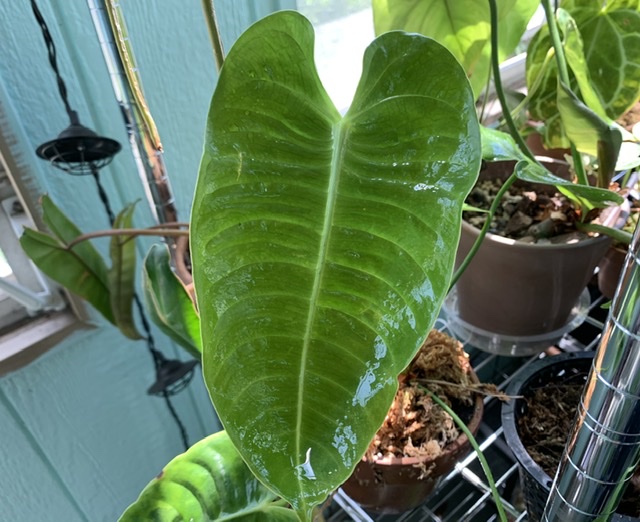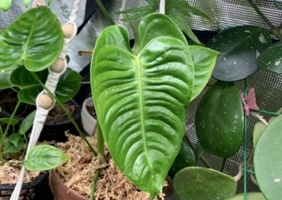So have you noticed this beautiful plant on Instagram with long rippled leaves? You wonder if you can grow such a plant in your apartment or house. The plant looks like something out of a Salvador Dali painting because it is just surreal. You most likely have never seen one of these plants In person because plant shops don’t usually stock them. Even though Veitchii looks like it would be hard to grow, it actually is pretty easy if you give it what it likes.
Please note: This post contains affiliate links. I may earn a commission on some items linked on this page.
ThePlantUtopia.com is a participant in the Amazon Services LLC Associates Program, an affiliate advertising program designed to provide a means for sites to earn advertising fees by advertising and linking to Amazon.com

Light
You first have to think about where you are going to put this plant in your home, do you have a window that gets sufficient light such as east or west window? If you have an appropriate window, that is great but a lot of people live in apartments with limited windows and light. Well, don’t worry about it because these plants will be happy and grow under grow lights if you have no natural light or big windows. I have been successful at growing this plant in a grow tent that only gets light from T5 fluorescent lights and the plant grows great even in the winter because it is like summer in there all year round.
You also have the option of growing it under inexpensive LED lights although I haven’t tried this out yet with Anthurium Veitchii but it seems to work well with my other plants. I do plan to test LED lights out in the future to see the results I can get so this is an idea for a future blog post to look forward to.
Soil
One of the most important things to consider is that Veitchii needs well draining soil so the roots can get plenty of oxygen. This plant likes moisture, but it does not want to sit in wet soil all the time. There isn’t an exact mixture that I use for soil but I usually do mix my own soil because the potting soil that you can get at big box stores is just too heavy to just use right out of the bag.
I like to mix regular potting soil and I am not picky about the brand. Usually I just use what I have on hand like Miracle Grow or even the Eco Scraps soil they sell at Target. You do not have to go out of your way and pay extra for a soil when ultimately you are going to mix your own soil anyway. Some people swear by pro-mix or black gold and to be honest I have tried all different kinds and have not noticed any difference.
Stuff to mix in your soil to make it well draining
I start out with perlite which I buy in bulk on Amazon and then I add some orchid bark
, horticultural charcoal
and even some granite poultry grit
if I have it on hand. Sometimes I throw in some cocoa coir
because it helps retain moisture a bit so the soil doesn’t dry out really fast in the hot summer months when I put Veitchii out in the sunroom. I just basically mix it all together until I have a nice chunky mix. I also like to get screens or little plastic inserts
to put over the holes in the pot so the soil doesn’t poor out of the pot once I put it in. You can also use coffee filters or paper towels if that is all you have on hand.
What kind of pots are the best for Anthurium Veitchii?
When I first get a plant, it is usually in a plastic pot. In the past, I have left plants in these plastic pots for long periods of time which is a habit I am trying to break. I have been improving lately by getting them into better pots after they overcome the shipping shock due to being in a box for days. Now you might like plastic pots and that is up to you but you will want to adjust your soil to be even more chunky because plants in plastic or ceramic pots tend to not dry out as fast. I am just not a fan of plastic pots so I never think of those pots as their permanent homes.
I am going to recommend terra cotta pots for anthuriums because they provide the most air flow and help reduce the chance of keeping the plant too wet. If you don’t like the look of terra cotta, you can always do a watered down wash with acrylic paint to make them look more patina’d. You don’t want to fully paint them with multiple coats of paint though because that just defeats the purpose of using terra cotta pots for aeration. I also love terra cotta because then you can put some moist sphagnum moss on top of the soil to help the anthurium grow aerial roots.

Water
So how often should you water Veitchii? I don’t follow a set schedule, I just make sure to check the moss and soil to make sure it isn’t dried out because this plant will get droopy. The first Veitchii I had ended up passing away because I didn’t water it enough. Some people water too much and some don’t water enough, I have to admit that I am an under waterer. I lose more plants from lack of water than root rot.
Humidity
Anthurium Veitchii needs to have good humidity to grow well or the plant tends to get brown tips on it’s leaves. My grow tent humidity tends to run between 70% and 80% during the day and even higher at night since the fan doesn’t run at night. If you want to keep Veitchii growing in your normal house environment, it would be beneficial to have a humidifier nearby to help keep the humidity up. You can also put it on a pebble tree which will help and also the sphagnum moss on top of the soil will help. Unfortunately, on dry days the moss will dry out fast and it will need a quick misting to keep it moist.
In my home, we have a variety of humidity depending on the weather outside, if it is really hot, the environment tends to be dry and if we have rainy days then the humidity tends to go up in the house. Veitchii does prefer a humidity above 50% and if it does go below that then the plant will not thrive and you most likely won’t get the big beautiful leaves that this plant capable of.
Temperature
I keep my Veitchii at temperatures between 70 to 80 degrees Fahrenheit and they seem to be most happy at those temps. Before I started to grow this plant in the grow tent, I had it in my bedroom during the winter which is cold and dry because I live in an old cape cod house with bad upstairs heating. The average temp in the winter in my bedroom runs about 65 to 68 degrees Fahrenheit and Veitchii did not thrive in these temps which is why I moved it to the grow tent.
The thing to consider if you are going to grow this plant in a grow tent, is that it needs good air flow so a fan will need to be running at least during the day. I run my fan for 12 hours and then I leave it off 12 hours to provide the humidity to increase during the night. I have noticed that once I move the aroids from outside to the grow tent again that I will need to add a 2nd fan. When I removed my hoyas from the grow tent, I noticed a little mold on some of them and we do not want that because anthuriums need good air flow to thrive.

Fertilization
In order to get Veitchii to grow at a larger size it will need to get some nutrients from fertilizer. I tend to be lacking on fertilizing my plants but I have been getting better. I bet if I would have started fertilizing this plant regular early on, it would be a lot bigger. One of my favorite fertilizers to use is fish emulsion with seaweed, it stinks but the plants love it. I also like to water with VF11 plant food. If you can’t find the VF11 in your area then you could substitute with some SUPERthrive
which they sell at Amazon(link provided), Lowes and Home Depot.
Pests
Unfortunately, Anthurium Veitchii has a very nice texture and it does attract pests. The most frequent pest that I have had to fight off on this plant are thrips and sometimes spider mites. What I do for both of these bugs is to take the plant outside and hose down the leaves and stems with a strong spray so the bugs are removed from the plant. If you don’t have access to a garden hose then you can do this with the sprayer in your shower, kitchen sink or you can purchase a cheap hose that slides over your kitchen, bathroom or basement sink nozzle. The cheap hose that goes over the faucet nozzle is a pain to use because it likes to slip off and then water squirts everywhere but it is doable. I used one when I brought the plants in before winter last year.
Once you have your plants sprayed off with plain water, you should spray with a soapy water solution of Dr. Bronner’s – Peppermint Pure-Castile Liquid Soap and water. I don’t measure it out, I simply squirt a few droplets of the soap into the water in a spray bottle and make sure to shake it up before spraying off the plants. If you really have a bad infestation, you can break out some Neem
but be sure to use it soon after mixing because it’s effectiveness starts to break down within 8 hours once it is mixed.


